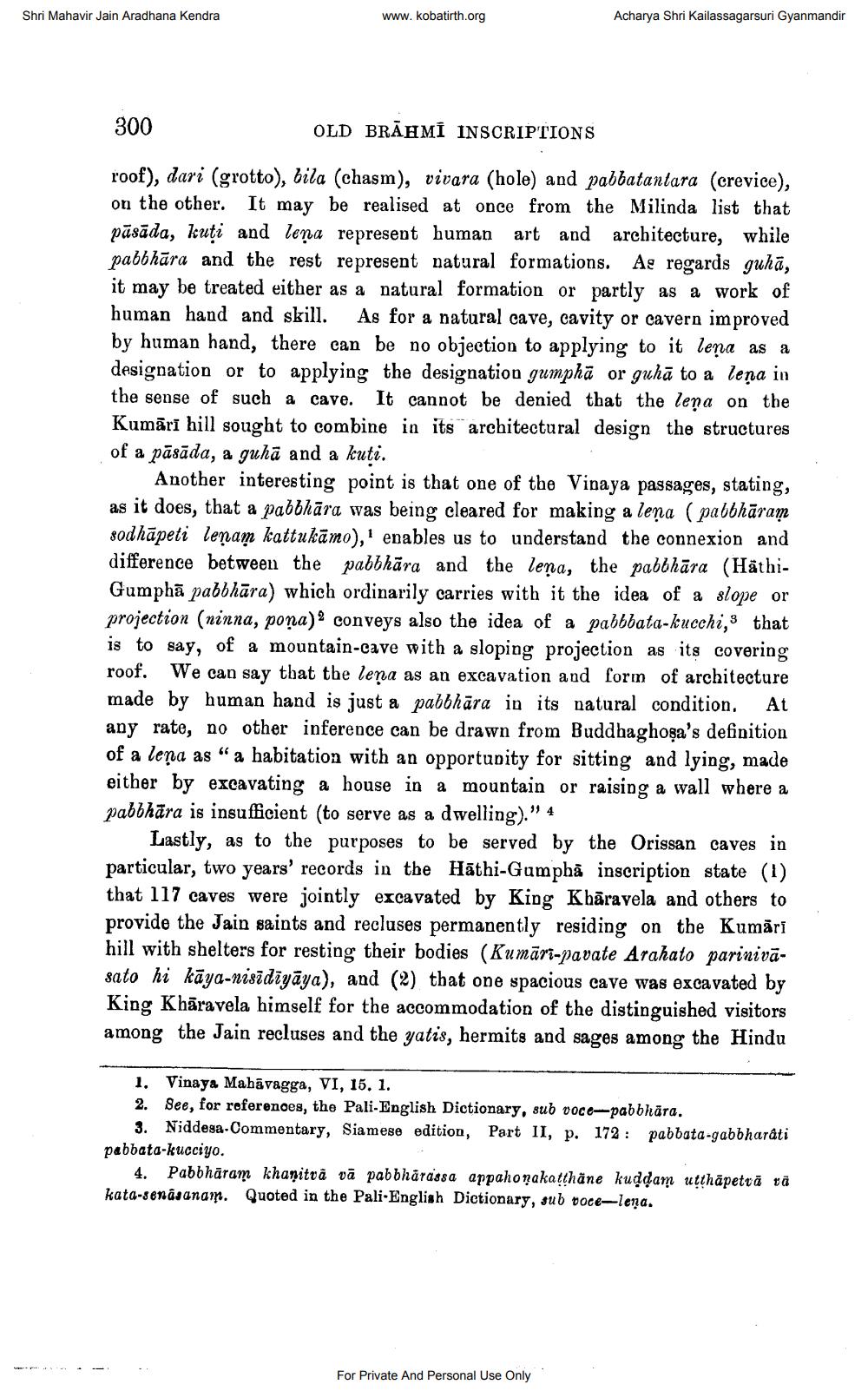________________
Shri Mahavir Jain Aradhana Kendra
www.kobatirth.org
Acharya Shri Kailassagarsuri Gyanmandir
300
OLD BRĀHMİ INSCRIPTIONS
roof), dari (grotto), bila (chasm), vivara (hole) and pabbatantara (crevice), on the other. It may be realised at once from the Milinda list that pāsāda, kuti and lena represent human art and architecture, while pabbhāra and the rest represent natural formations. As regards guhā, it may be treated either as a natural formation or partly as a work of human hand and skill. As for a natural cave, cavity or cavern improved by human hand, there can be no objection to applying to it leña as a designation or to applying the designation gumpha or guhā to a leņa in the sense of such a cave. It cannot be denied that the leņa on the Kumārī hill sought to combine in its architectural design the structures of a pāsāda, a guha and a kuti.
Another interesting point is that one of the Vinaya passages, stating, as it does, that a pabbhāra was being cleared for making a leņa (pabbhāram sodhāpeti leņam kattu kāmo), enables us to understand the connexion and difference between the pabbhāra and the leņa, the pabbhāra (HäthiGumphā pabbhāra) which ordinarily carries with it the idea of a slope or projection (ninna, poņa)? conveys also the idea of a pabbbata-kucchi,3 that is to say, of a mountain-cave with a sloping projection as its covering roof. We can say that the lena as an excavation and form of architecture made by human hand is just a pabbhāra in its natural condition. At any rate, no other inference can be drawn from Buddhaghosa's definition of a leņa as “a habitation with an opportunity for sitting and lying, made either by excavating a house in a mountain or raising a wall where a pabbhāra is insufficient (to serve as a dwelling)." 4
Lastly, as to the purposes to be served by the Orissan caves in particular, two years' records in the Hāthi-Gampha inscription state (1) that 117 caves were jointly excavated by King Khāravela and others to provide the Jain saints and recluses permanently residing on the Kumāri hill with shelters for resting their bodies (Kumāri-pavate Arahato parinivasato hi kāya-nisīdīyāya), and (2) that one spacious cave was excavated by King Khāravela himself for the accommodation of the distinguished visitors among the Jain recluses and the yatis, hermits and sages among the Hindu
1. Vinaya Mabāvagga, VI, 15. 1. 2. See, for references, the Pali-English Dictionary, sub voce-pabbhāra.
3. Niddega-Commentary, Siamese edition, Part II, p. 172: pabbata-gabbharati pabbata-kucciyo.
4. Pabbharam khanitvā vā pabbharassa appaho nakatthäne kuddam utthāpetrā tā kata-senasanam. Quoted in the Pali-English Dictionary, sub doce-lena.
For Private And Personal Use Only




